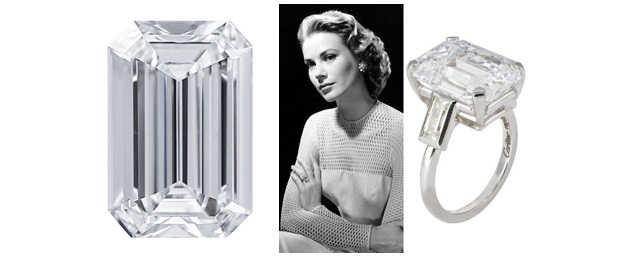All diamond shapes considered, The Emerald cut diamond embodies elegance. The clean lines and delicate angles make for an exceptional center piece of an engagement ring. Grace Kelly, Beyonce, and Angelina Jolie, have worn some of the most famous emerald cut engagement rings of all time.
Emerald Cut Diamonds Creates an Exceptional Sparkle
Unlike brilliant cut shapes, an emerald cut diamond features step cuts. A step cut can be described as a diamond cut that features a square or rectangular shape, where the facets are arranged parallel to one another. The cut derives its name from the way in which the facets are arranged; they appear larger than a brilliant cut diamond and look like steps. The emerald cut’s long, rectangular facets create a sparkle known as the “hall of mirrors” effect. This effect emits sparkle and brilliance in a more subdued fashion.
